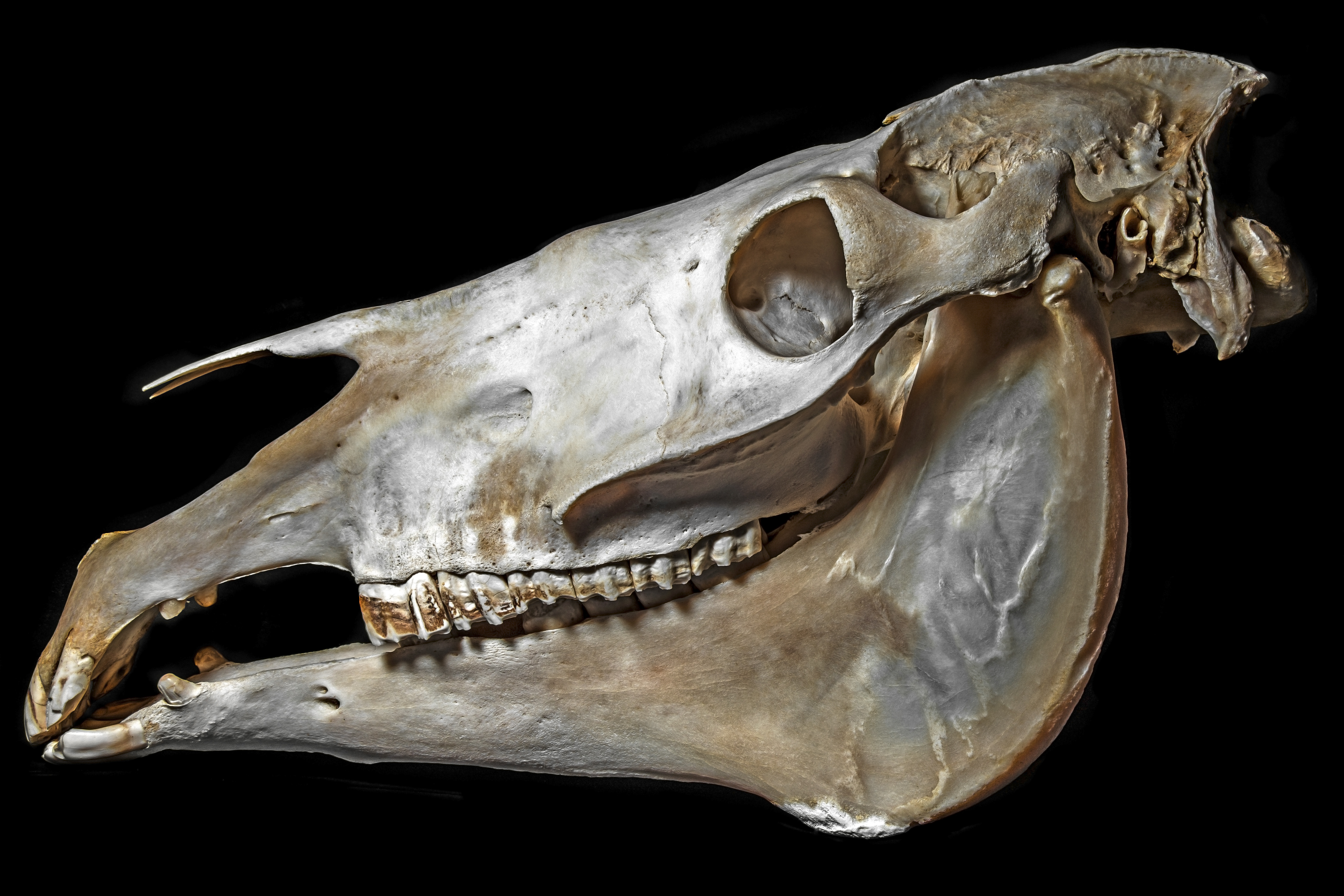Surgery may be best for temporohyoid arthritis in horses
- December 20, 2023
- ⎯ Christine Barakat
Research from the University of California– Davis suggests that surgery may be the best option for treating temporohyoid osteoarthropathy (THO), an arthritic condition of a joint at the base of the skull that can lead to severe neurological impairment.

THO affects the temporohyoid joint between the skull and the hyoid apparatus, the bony structure that supports the base of the tongue. Why arthritis forms in this location is unclear, but it may be related to middle ear infections or trauma.
Click here to learn more about the different types of NSAIDs.
Early signs of THO include head shaking and/or head tilt as the bony changes affect nearby nerves. If the condition becomes severe enough, the horse may develop facial or ear droop, wobbliness, loss of balance, abnormal eye movement and even the inability to swallow. Horses with THO may be treated medically with antibiotic and anti-inflammatory medications or surgically by removing the ceratohyoid bone, thus reducing stress and inflammation on the temporohyoid joint.
For the Davis study, researchers examined the records of all horses admitted to the university clinic with THO from 1990 to 2014. Thirteen of the 20 horses treated only with medication died or were euthanatized because of the condition. In contrast, only two of 33 horses treated surgically succumbed. The researchers found no correlation between the likelihood of survival and the duration of clinical signs or the nature of radiographic and endoscopic findings.
The researchers conclude that “prognosis for horses with THO is good-to-excellent for survival with surgical intervention and fair with medical therapy alone.”
Reference: “Outcome after medical and surgical intervention in horses with temporohyoid osteoarthropathy,” Equine Veterinary Journal, May 2017
This article first appeared in EQUUS Volume #379
Don’t miss out! With the free weekly EQUUS newsletter, you’ll get the latest horse health information delivered right to your in basket! If you’re not already receiving the EQUUS newsletter, click here to sign up. It’s *free*!








